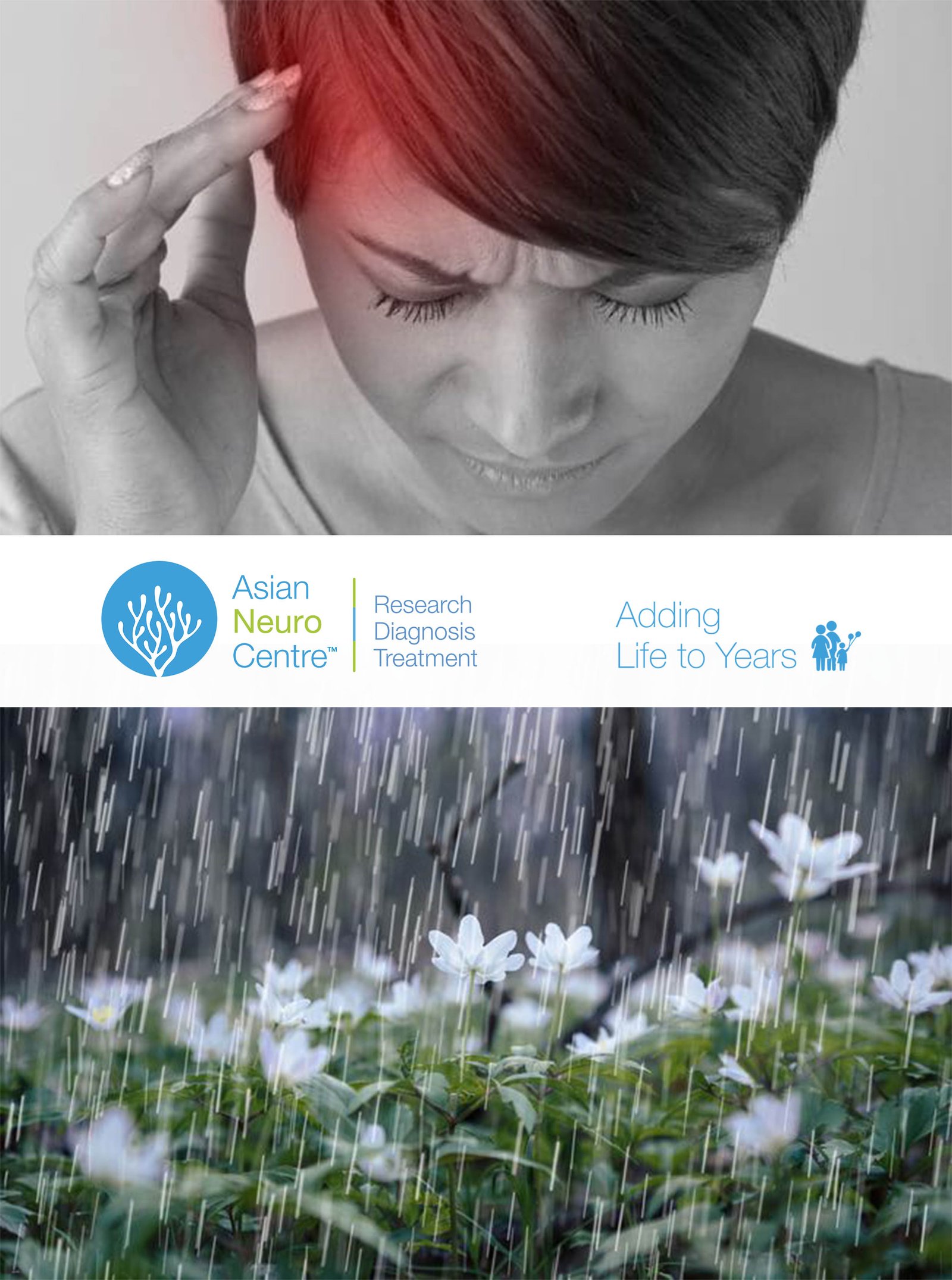- Have any questions?
- 911 12345 29
- info@asianneurocentre.com
MONSOON and MIGRAINE

Litchi and Encepahlitis
July 27, 2019
Thank You For Your Trust, Support & Kindness, celebrating six years of my practice as Neurologist.
July 31, 2019Migraine is an episodic/chronic neurological disorder characterized by recurrent moderate to severe headaches often in association with a number of autonomic symptoms like nausea, vomiting, photophobia (increased sensitivity to light), phonophobia and the pain is generally aggravated by physical activity. Up to one-third of people with migraine headaches perceive an aura: a transient visual, sensory, language, or motor disturbance which signals that the headache will soon occur. Occasionally an aura can occur with little or no headache following it.. Globally, approximately 15% of the population is affected by migraines at some point in life. Chronic migraines occur in approximately 1.4 to 2.2% of the population.
Migraines are believed to be due to a mixture of environmental and genetic factors. About two-thirds of cases run in families. Fluctuating hormone levels may also play a role: The exact mechanisms of migraine are not known. It is, however, believed to be a neurovascular disorder. The primary theory is related to increased excitability of the cerebral cortex and abnormal control of pain neurons in the trigeminal nucleus of the brainstem. It is believed to be increasing in India due to changing lifestyle. Life style of people is fast changing in India and full of stressful situations due to corporate culture and demand to perform better.

Some people use the term seasonal migraine to describe migraine attacks that occurs more often in one season. Seasonal migraine occurs due to increased exposure to certain triggers. For example, after exposure to the sun upto 30% of migraine sufferers have attacks. Light and sleep habits are well known influences on migraine. Increased incidence of migraine in monsoon is due to rapid change in temperature in form of cold ,increased humidity, moisture in air. Some of the body’s senses are super-sensitive in migraine sufferers, particularly vision. Weather and weather changes may also cause migraine. Doctor’s don’t fully understand why it seems that some migraines are weather related. Researchers speculate that the amount of sunlight might impact how well a person sleeps and lack of sleep can trigger a migraine attack.
More than 75% of migraine with aura and 46% of migraine without aura had seasonal migraine. Temperature is the major trigger and every 9 degree F increase in temperature, raises risk by 7.5%. Understanding your migraine triggers will help you and your doctors better manage your migraines. In recurrent unexplained headaches keeping a “headache diary” with entries on type of headache, associated symptoms, precipitating and aggravating factors may be helpful. This may reveal specific patterns, such as an association with medication, menstruation or absenteeism or with certain foods.
There are however two types of treatment for headaches meaning acute abortive treatment and preventive treatment. Whereas the first is aimed to relieve the symptoms immediately, the latter is focused on controlling the headaches that are chronic. The primary goal of preventive treatment is to reduce the frequency, severity, and duration of headaches.
This type of treatment involves taking medication on a daily basis for at least 3 months and in some cases, for over 6 months. Generally, medication in preventive treatment starts at the minimum dosage which increases gradually until the pain is relieved and the goal achieved or until side effects appear.

